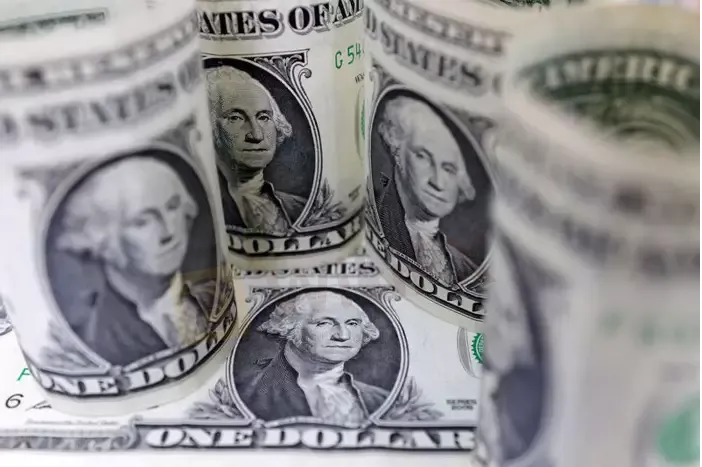简体中文
繁體中文
English
Pусский
日本語
ภาษาไทย
Tiếng Việt
Bahasa Indonesia
Español
हिन्दी
Filippiiniläinen
Français
Deutsch
Português
Türkçe
한국어
العربية
Dollar extends gains against yen as big Fed hike bets ramp up
Abstract:The dollar extended it best rally against the yen since mid-June on Monday, buoyed by higher Treasury yields after blockbuster U.S. jobs data lifted expectations for more aggressive Federal Reserve policy tightening.

The dollar extended it best rally against the yen since mid-June on Monday, buoyed by higher Treasury yields after blockbuster U.S. jobs data lifted expectations for more aggressive Federal Reserve policy tightening.
The greenback was last 0.31% higher at 135.42 yen, and earlier rose to 135.585 yen, its highest since July 28, after surging 1.57% in the previous session, its biggest single-day gain since June 17.
The dollar index, which measures the currency against six counterparts, stood at 106.77, from a Friday peak of 106.93, also the strongest since July 28.
Traders currently see a 73.5% probability the Fed continues the pace of 75 basis-point interest-rate increases for its next policy decision on Sept. 21, from about 41% before surprisingly strong payrolls data on Friday raised worries that wage growth would fuel inflationary pressures.
The focus this week will be on the U.S. consumer price index due Wednesday, and whether it can cement the odds for super-sized rate rises. Analysts polled by Reuters expect annual inflation eased to 8.7% in July from 9.1% previously.
“It will likely take a number below 8.4% to get the odds of a 50bp hike in September as the default setting,” although that “seems unlikely,” Chris Weston, head of research at Pepperstone, wrote in a note.
“I wouldnt want to be short USDs if the CPI print comes in above 9%.”
The two-year Treasury yield remained elevated at 3.2628% in Tokyo trading on Monday, after reaching 3.3310% at the end of last week, a level not seen since mid-June.
The 10-year yield stood at 2.8470%, sticking close to the two-week high of 2.8690% touched Friday.
The negative spread between the two- and 10-year yields was 42 basis points, having hit 45 basis points on Friday, the most since August 2000. An inverted yield curve is widely interpreted as a pre-cursor to a recession.
Elsewhere, the euro sank 0.35% to $1.01595 while sterling slid 0.19% to $1.2050.
The British pound dropped as low as $1.2004 on Friday, a day after the Bank of England raises interest rates by an as-expected half a point at the same time as warning of a protracted downturn.
“The Bank of Englands forecast of recession underpins the vulnerability of the pound going forward,” Rabobank senior FX strategist Jane Foley wrote in a note, predicting sterling could dip to $1.14 within three months.
Meanwhile, the Australian dollar slipped 0.06% to $0.6907, while the New Zealand dollar fell 0.19% to $0.62315.

Disclaimer:
The views in this article only represent the author's personal views, and do not constitute investment advice on this platform. This platform does not guarantee the accuracy, completeness and timeliness of the information in the article, and will not be liable for any loss caused by the use of or reliance on the information in the article.
Read more

BlackBull: A Closer Look at Its Licenses
When selecting a broker, understanding its regulatory standing is an important part of assessing overall reliability. For traders seeking to protect their capital, ensuring that a platform operates under recognised and stringent oversight can make all the difference. Keep reading to learn more about BlackBull and its licenses.

Dark Side of AETOS: They Don’t Want You to Know
AETOS is an Australia-based broker. All over the internet, you will find positive reviews about this broker, but no one is talking about the risks involved with AETOS. However, we have exposed the hidden risks associated with AETOS

Contemplating Investments in Quotex? Abandon Your Plan Before You Lose All Your Funds
Have you received calls from Quotex executives claiming to offer you returns of over 50% per month? Do you face both deposit and withdrawal issues at this company? Or have you faced a complete scam trading with this forex broker? You're not alone. Here is the exposure story.

15 Brokers FCA Says "Are Operating Illegally" Beware!
If a reputable regulator issues a warning about unlicensed brokers, it's important to take it seriously — whether you're a trader or an investor. Here is a list you can check out- be cautious and avoid getting involved with these scam brokers.
WikiFX Broker
Latest News
Exness Halts New India Accounts Amid Regulatory Change
eToro and BridgeWise Launch AI Smart Portfolio for US Mid-Cap Stocks
Contemplating Investments in Quotex? Abandon Your Plan Before You Lose All Your Funds
How family offices can protect the bottom line when putting family members on payroll
Meta says it won't sign Europe AI agreement, calling it an overreach that will stunt growth
Ether and trading stocks take the crypto spotlight as Congress passes historic stablecoin bill
Inflation outlook tumbles to pre-tariff levels in latest University of Michigan survey
Peter Thiel-backed cryptocurrency exchange Bullish files to go public on NYSE
What a Trump, Powell faceoff means for your money
Ether takes crypto spotlight as Congress passes historic stablecoin bill
Currency Calculator


